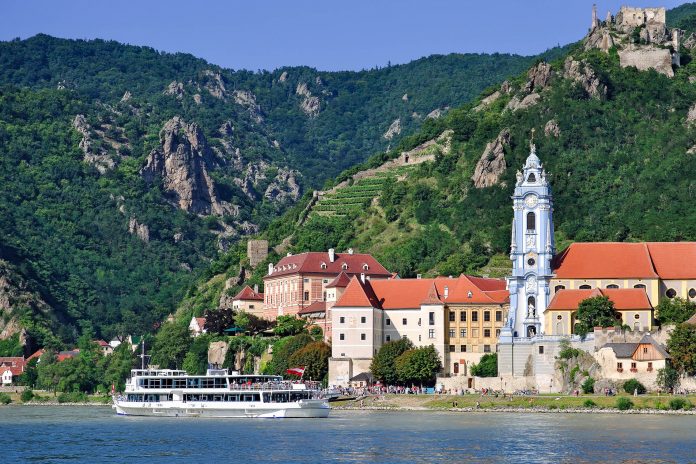Die Wachau an der Donau ist bekannt und beliebt aufgrund ihrer wunderschönen Landschaft aus Wein- und Marillengärten mit schmucken Ortschaften, mittelalterlichen Burgen und imposanten Schlössern.
Die Wachau ist der etwa 30 Kilometer lange äußerst idyllische Landstrich entlang der Donau zwischen Melk und Krems in Niederösterreich. Sie liegt ca. 80km von der österreichischen Bundeshauptstadt Wien entfernt und zählt zu unseren Top 10 Sehenswürdigkeiten von Österreich.
Die Donau schlängelt sich in der Wachau durch sanfte Hügel, teils bewaldet teils voller Weingärten, vorbei an malerischen Ortschaften, bilderbuchartigen Schlössern und mittelalterlichen Burgen. Das Gebiet wurde aufgrund seiner natürlichen Schönheit und seiner kulturellen und architektonischen Schätze im Jahr 2000 auf die UNESCO-Liste der Weltkultur- und -naturerbestätten gesetzt.
Inhaltsverzeichnis
BILDER: Wachau
Besiedlung der Wachau
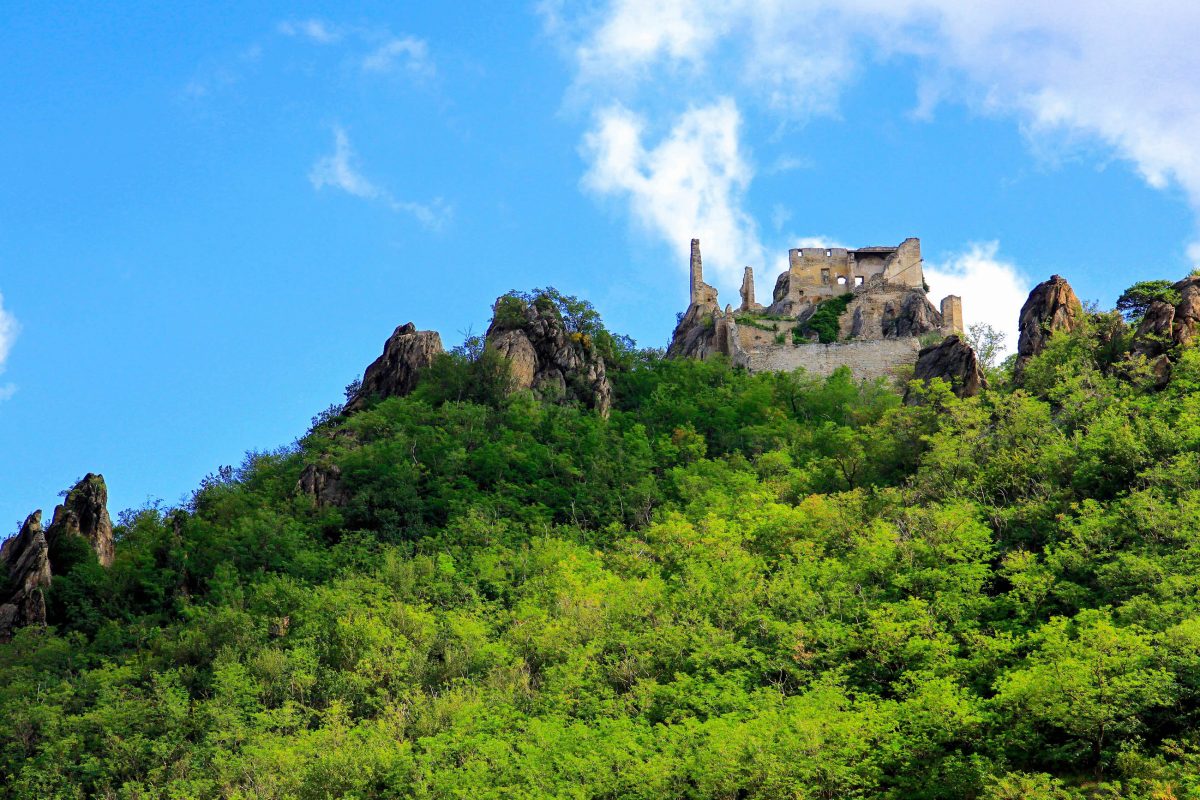
Die Wachau war bereits im Jungpaläolithikum mehrere zigtausend Jahre vor Christus zur Zeit der Neandertaler besiedelt. Dies beweisen die international bekannten Funde der beiden urtümlichen Frauenstatuetten Venus vom Galgenberg und Venus von Willendorf. Letztere ist im Naturhistorischen Museum in Wien zu sehen.
Auch auf die Bronze- und Eisenzeit gehen viele archäologische Entdeckungen zurück. Die erste urkundliche Erwähnung erfolgt im Jahr 972 in einer Urkunde des Kaisers Otto I., damals noch unter dem Namen „Vuachoua“.
Bereits im Jahre 800 wurde das Donautal von den bayrischen und Salzburger Klöstern als Weinanbaugebiet genutzt. Diese setzten damals die ersten Trassen der heutigen Weingärten.
Mittelalterliche Dorfarchitektur in der Wachau
Das Erscheinungsbild der Städte und Orte in der Wachau reicht bis ins 11. und 12. Jahrhundert zurück. Als besonders attraktiv zu nennen sind hier Dürnstein, Stein an der Donau, Weissenkirchen und Spitz an der Donau. Die scheinbar ziellose Anordnung der Häuser und die engen verwinkelten Straßen dazwischen sind noch typisch für das Mittelalter.
Einige der Ortszentren wurden vergrößert, einige Häuser abgerissen und einige Fassaden erneuert, doch vielfach sieht man an den Wänden noch die Malereien, Figuren, Nischen und barocken Verzierungen von damals.
Barock-Architektur in der Wachau
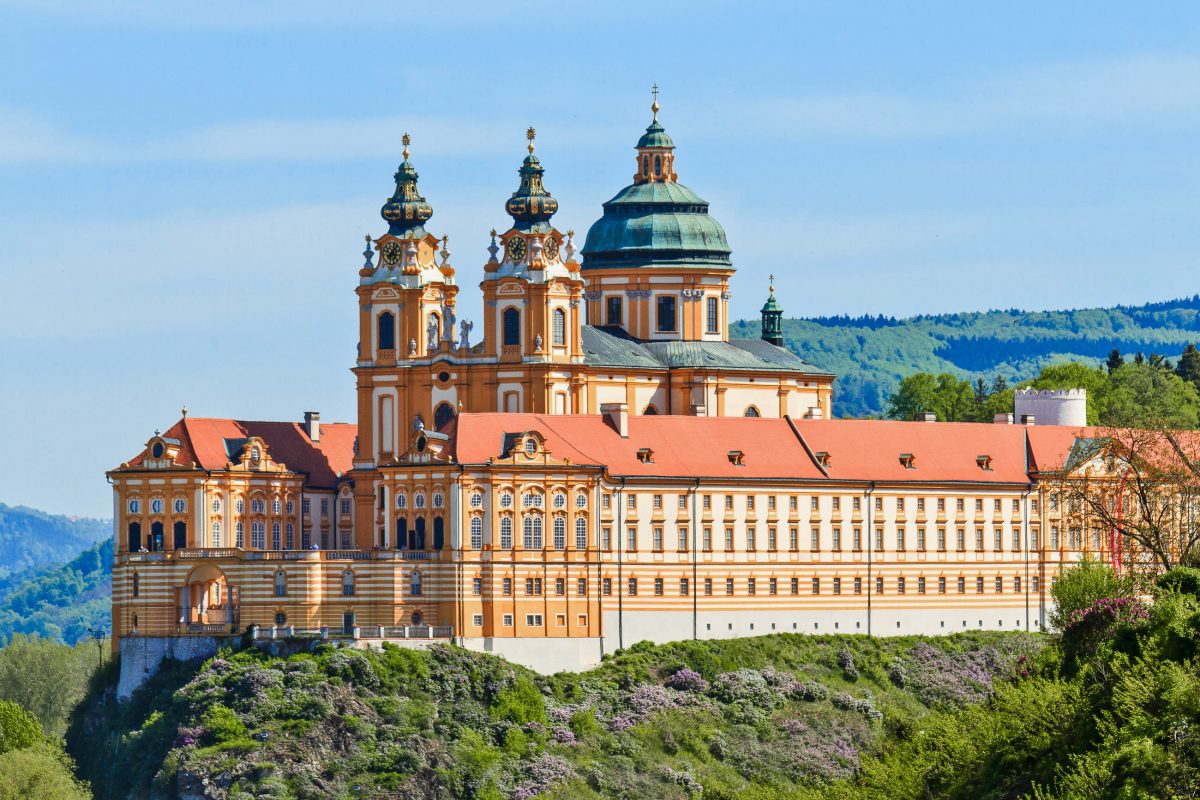
Ende des 18. und Anfang des 19. Jahrhunderts entstanden einige der größten Monumente des österreichischen Barock, unter anderem die imposanten Stiftskirchen Melk, Dürnstein und Göttweig. Allesamt auf Hügeln thronend sind sie schon von weitem sichtbar und bieten einen herrlichen Ausblick über die sanften Hänge der Wachau.
Burgen und Schlösser der Wachau
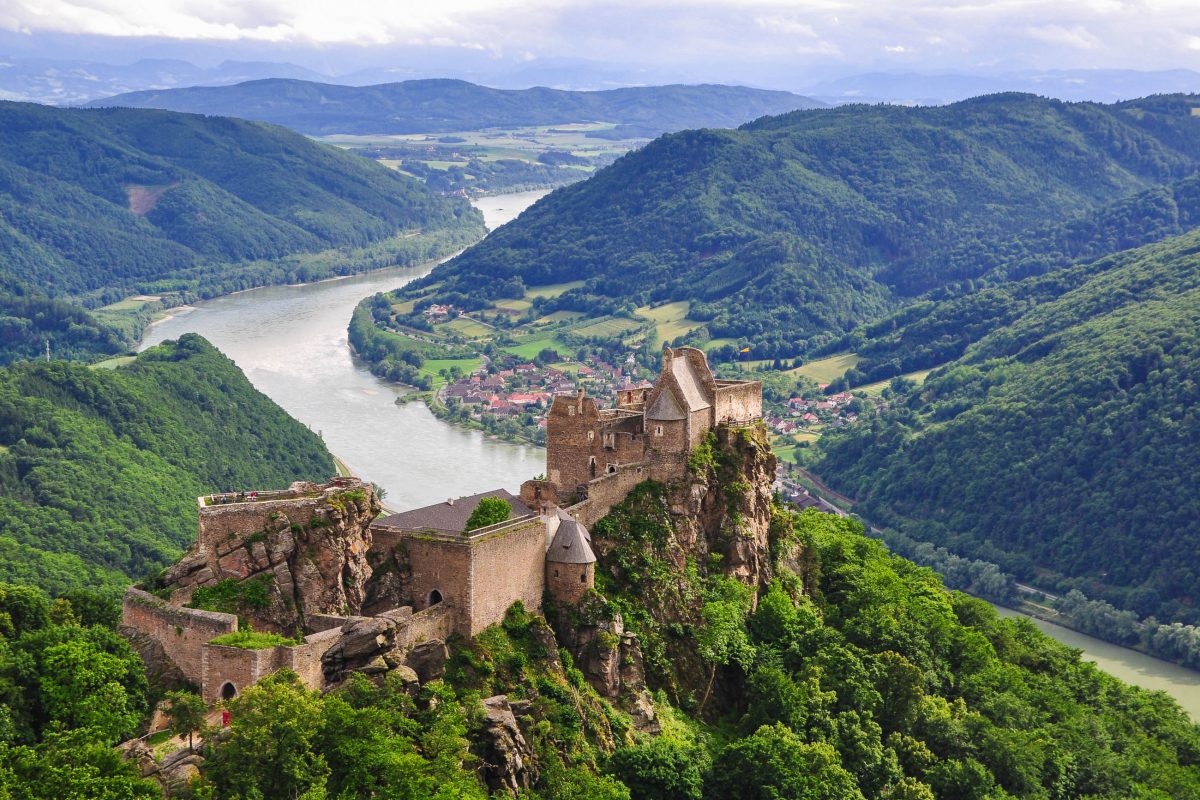
Auch außerhalb der Ortschaften ging es rund in der Wachau. Durch die Nähe zur Donau als damals wichtigsten Verkehrsweg ragen im gesamten Gebiet der Wachau immer wieder Burgen und Schlösser oder deren Ruinen auf den Hügeln auf.
Einige der bekanntesten und schönsten sind das Renaissanceschloss Schallaburg, auf der immer wieder Ausstellungen gezeigt werden, oder die Ruine Aggstein. Als mittelalterliche Burgruine mit Wehrtürmen, Schießscharten, Rittersälen, Verliesen und Raubritter-Relikten eine der faszinierendsten Sehenswürdigkeiten der Wachau.
Als sich Ende des 19. Jahrhunderts die Transportwege zusehends von der Donau auf Straße und Schiene verlegte, verlor die Wachau nach und nach an Bedeutung. Einen Aufschwung erhielt sie jedoch durch die Kampagne „Goldene Wachau“, in der das Gebiet als historische, künstlerische und idyllisch-entspannende Schatzkammer touristisch vermarktet wurde. Auch die Fernsehserie „Donauprinzessin“ trug zur Steigerung des Bekanntheitsgrades bei. Wie man sieht, mit Erfolg.
Urlaub in der Wachau
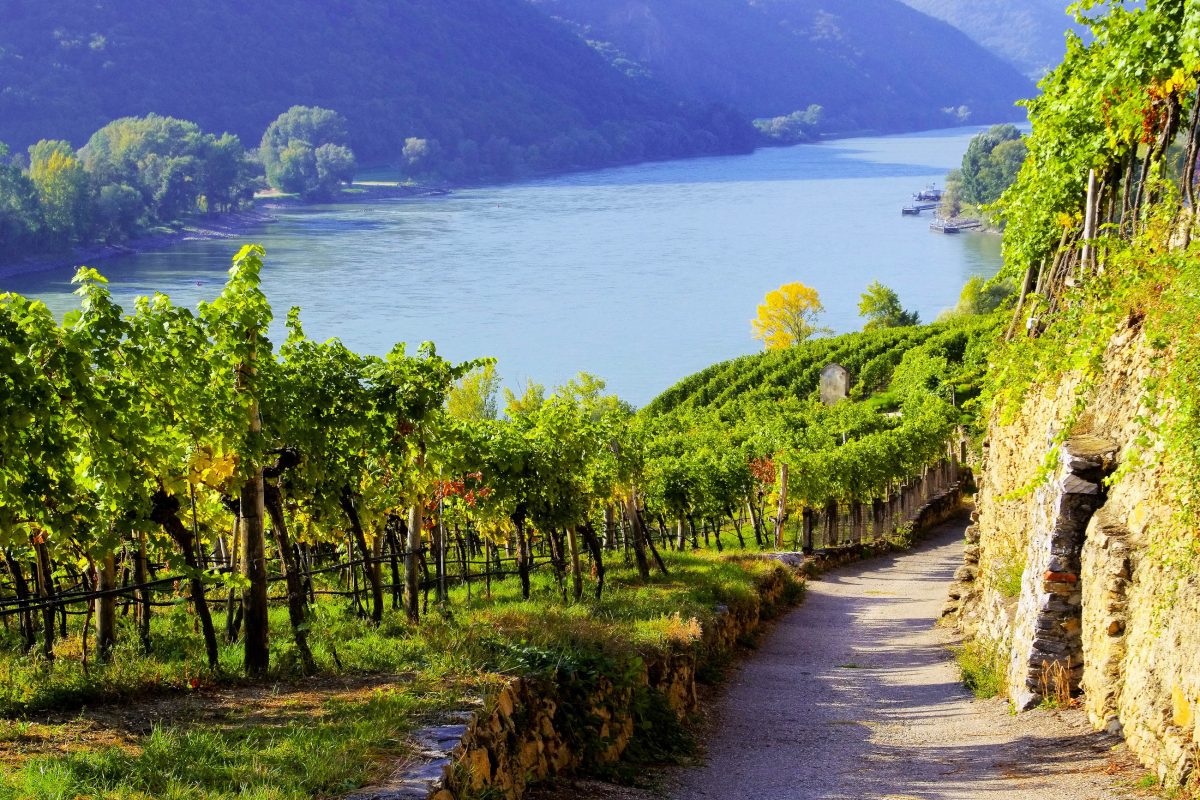
Heute ist die Wachau nicht nur ein Kleinod der Natur und der Architektur sondern auch eines der wichtigsten Weinanbaugebiete Österreichs. Die besten Weine können hier bei den hiesigen „Heurigen“ verkostet werden. Neben den Weinen haben auch die Marillen aus der Wachau und diverse Erzeugnisse aus den samtenen Früchten einen ganz besonders schmackhaften Ruf.
Neben Wanderungen und Radtouren an der Donau entlang, kann die Wachau auch zu Wasser erkundet werden. Die Donaudampfschiffahrtsgesellschaft oder die Donau Schiffsstationen GmbH bieten eine Entdeckung der idyllischsten Plätze und malerischsten Ortschaften per Luxusdampfer.
Die beste Reisezeit für die Wachau

Die Wachau ist das ganze Jahr über einen Besuch wert. Zu jeder Jahreszeit findet sich ein anderes Highlight:
- Im Frühjahr raubt einem der Duft von tausenden Marillenblüten (oder der Frühlingswein) die Sinne.
- Im Sommer lädt der sanfte Strom der Donau zum Baden ein. I
- m Herbst ist die atemberaubende Färbung der Weinreben und Laubbäume zwischen den Nebelschwaden ein Fest für die Augen.
- Im Winter gilt es den ersten Jungwein zu genießen.
Veranstaltungen in der Wachau

Besondere Veranstaltungen sind der Wachauer Weinfrühling am ersten Wochenende im Mai, an dem man kostenlos an Weinverkostungen teilnehmen kann, der Marillenkirtag, das Feuerwerk zur Sommersonnenwende, die Weinlese und der Weinherbst, sowie der alljährliche Wachau-Marathon.
Weiterführende Links:
Offizielle Website der Wachau
Schifffahrt auf der Donau bei der Donaudampfschifffahrtsgesellschaft
Mehr über die Weine der Wachau und deren Anbau
Alle Infos über den Wachau-Marathon

